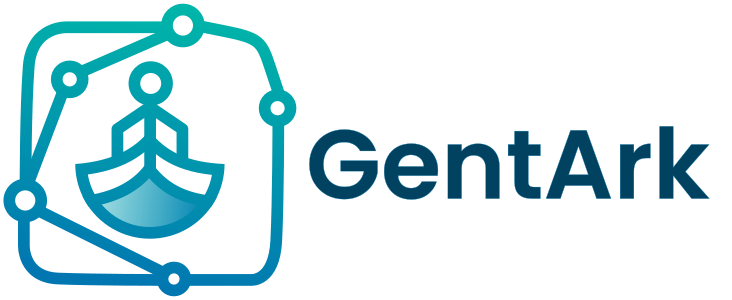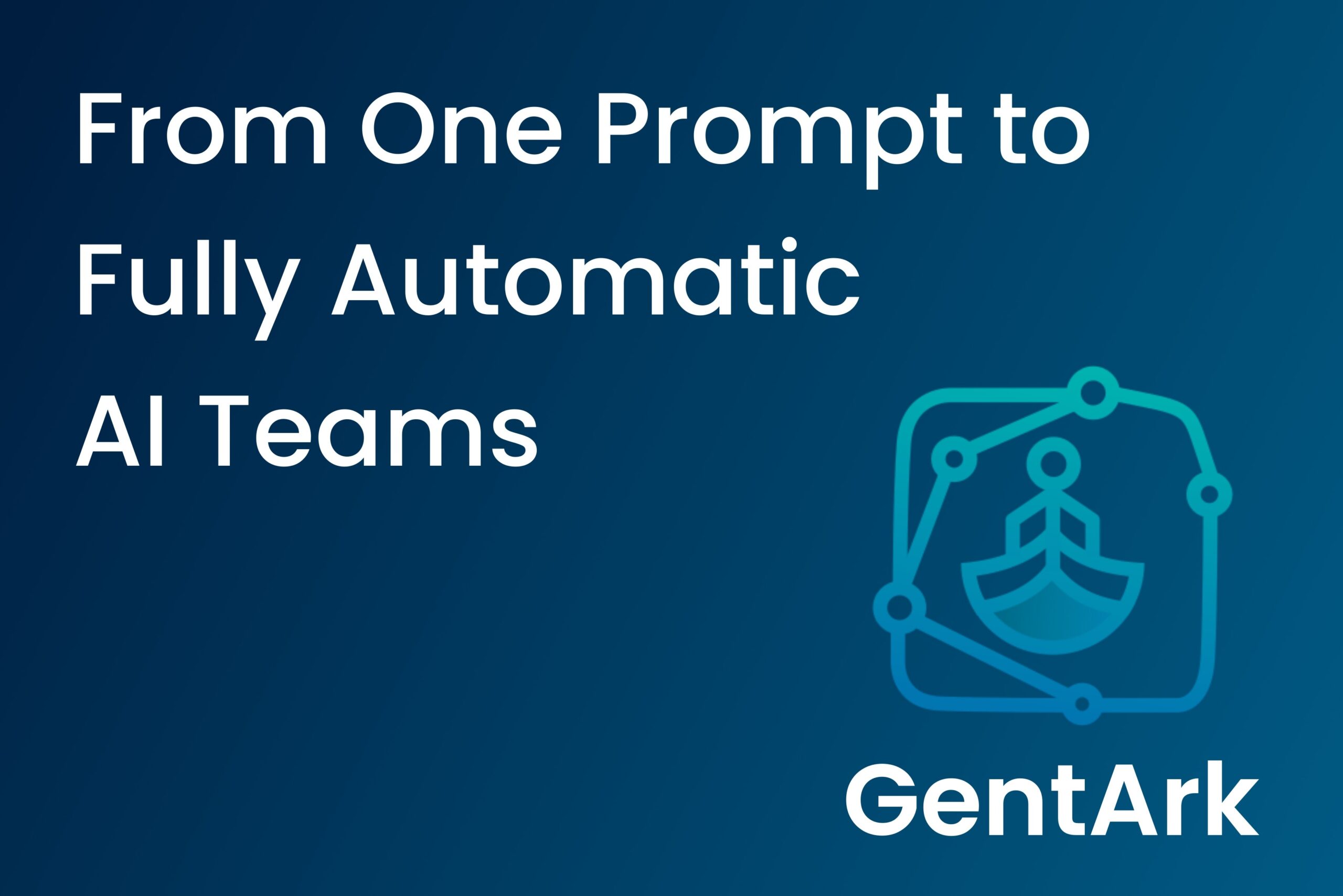The Problem We’re Solving
Most AI tools today work like single helpers. They can draft emails, draft marketing copies, or even generate applications. And yes – there are platforms that let you chain these helpers into workflows, and specialized builders that go end-to-end for coding or design.
But they all share one big limitation: you still must design the workflow yourself or accept that the scope is limited to one narrow domain.
What’s missing is full automation.
Large AI models today can analyze problems and even propose solutions. That’s useful, but it’s rarely the end of the process. The reality is that output often needs fixing: code may not run, facts may be inaccurate, or details might be missing. Users end up in a constant loop of back-and-forth — reviewing each response, spotting errors, asking the AI to retry, then validating again, not to mention memory loss, token limits, increasing frustration and low desire to adopt.
This interaction is time-consuming and frustrating.
An AI team changes the equation. Instead of the user catching every mistake, the agents can collaborate, flag issues in each other’s work, and refine the output as part of the workflow. That means less waiting for responses, less manual checking, and more progress toward a finished deliverable.
That’s the gap GentArk is built to close.
At GentArk, I’m building the next layer:
- Analyze the task – just like today’s AI tools already do.
- Automatically create a team of AI agents tailored to that task.
- Automatically generate the interaction workflow between those agents – with human override when needed.
- Run the task end to end so the output is a finished, packaged deliverable.
This is the difference between “AI that helps you step by step when you build the flow” and “AI teams that assemble themselves and deliver outcomes.”
The Current State of AI Adoption
AI is everywhere, but adoption is mostly surface level.
- About 61% of U.S. adults have tried AI in the past six months – but only 19% use it daily. ¹
- Among workers, 69% say they never use AI on the job, and only about 10% use it weekly. ²
- When people do use AI, it’s most often for simple tasks: asking questions, searching for information, or drafting short text. ³
In other words: complex workflows are not yet mainstream. Adoption drops sharply as tools get more technical or setup heavy.
This is exactly why GentArk matters: it lowers the barrier by turning a single prompt into a complete, automatic AI Team with its own interaction workflow.
Why Others Fall Short
Some might say: “But we already have frameworks and platforms for this.”
And it’s true – the space is busy. Here are a few examples:
- LangChain, AutoGen, CrewAI – powerful frameworks for developers to design agents and chains. But they require engineering effort and aren’t turnkey for enterprises.
- 8n8 – a workflow assembler where you connect agents and tools. But it doesn’t auto-create a team and run it from one prompt.
- Base44 – strong tool for turning ideas into apps with AI. But it’s focused mainly on software creation, not general orchestration.
- Cursor – a great AI coding environment with multi-step agents. But it’s built for developers, not for orchestrating varied outputs like docs, designs, or strategies.
All of these are valuable – but they stop short of general-purpose, automatic orchestration with packaged outcomes.
Even the big model providers are building toward this, but with one catch: most will keep their ecosystems locked down. OpenAI will prioritize OpenAI agents, Anthropic will keep Claude-native agents, Grok will prefer Grok, and Gemini will stay in Google’s world.
Cross-communication may be limited or blocked entirely.
GentArk is designed differently. My vision is to let the system select the best agents across platforms – an OpenAI agent collaborating with a Grok agent, a Gemini agent, or others – depending on the task at hand.
Because no single model will always be the best for every job.
The GentArk Approach
Think about how human teams’ work.
- In marketing: a strategist builds the plan, a writer drafts the copy, a designer adds visuals, and an analyst measures results.
- In operations: one person manages logistics, other handles customers, another ensures financials align.
- In product: a manager defines requirements, developers code, testers validate, and support prepares the rollout.
Work gets done by distinct roles, shared context, and common goals.
Now imagine the same, but with AI.
Each agent is specialized. Each knows its role. Together they form a project team with its own workflow. With GentArk, the team is created automatically in real time, based on the task – not manually designed step by step.
That’s the GentArk model: from one prompt to fully automatic team and workflow creation and orchestration.
The Prototype
To evaluate the idea, I built a local prototype. I was so excited to see the results that now I’m building the SaaS version, and it looks great.
Here’s what it can do today:
- I type one goal – here is a real example:
- “Create a marketing plan for https://quicklinkcards.com.
- Read the site and products descriptions.
- Create a 30-day marketing plan.
- Create an execution plan.
- Create marketing content to use.
- Create three images to use in social media.
- Create the content calendar.
- Create the .ics (calendar) file for all content publishing based on dates moving forward with content, target channel and image assets.
- Create a webpage to track execution progress with KPI’s.”
- The system spawns a tailored team of agents – a strategist, a content agent, a design agent, an analytics agent, and a web developer.
- The interaction workflow is generated automatically. Agents know who to talk to and when.
- I can add agents and interactions if needed.
- The experience is collaborative. I can guide the team or let them run.
- The result isn’t just notes – it’s packaged deliverables I can use.
- I can continue working on the task with the team at any time with new instructions and improve the output.
Most importantly, the prototype proves this is possible to fully automate the process: from one prompt → AI team → workflow → finished result.
Human Impact: Risks and Collaboration
GentArk isn’t about replacing people – it’s about making human + AI collaboration practical.
Humans bring judgment, creativity, and empathy. AI takes on the repetitive and technical steps. Combined, work gets done faster and with higher consistency.
Of course, multi-agent systems carry risks: if one agent produces an error, others can compound it. That’s why GentArk is built with humans in the loop – keeping oversight in place so outputs stay reliable and usable.
The real power lies in mixed teams. Picture a strategist working alongside AI content and analytics agents, or a project manager guiding AI developers and testers. In each case, humans set direction while AI handles execution.
And this vision extends beyond a single team. Imagine orchestration across departments – marketing synchronized with sales, product working together with support – with humans directing AI teams at scale.
The Opportunity
The timing couldn’t be better.
- Enterprises are spending billions on AI pilots, but most stall because they lack end-to-end workflows.
- According to Grand View Research, the enterprise AI market was valued at USD 23.95 billion in 2024 and is projected to reach USD 155.21 billion by 2030, growing at a CAGR of nearly 38%.
- Surveys show that while most people try AI for simple tasks, complex adoption is still rare.
That means the biggest opportunity is ahead: making advanced workflows simple and accessible.
GentArk is built for this gap:
- End-to-end automation from one prompt.
- Automatic AI team + workflow creation.
- Cross-model collaboration across OpenAI, Grok, Gemini, and others.
- Vertical agnostic – can work on any task.
Why This Matters
I didn’t build this as a lab experiment. I built it because I needed it.
Running multiple projects as a solo founder, I’ve lived the pain: one day in code, the next in marketing, the next in finance – all while overseeing operations.
AI copilots helped, but they never connected into a whole.
With GentArk, I can see a different future:
- Marketing: One prompt creates a campaign team that drafts, schedules, and analyzes content.
- Product: A spec is written, code drafted, tested, and validated – without me chasing every step.
- Support: Tickets are triaged, FAQs surfaced, drafts created, and complex cases escalated.
Instead of one assistant, you get a whole crew that works together automatically.
These aren’t abstract predictions. These are workflows the prototype already maps. They’re small but real – and they show the path forward.
Closing
Five years from now, enterprises won’t be juggling disconnected copilots.
They’ll subscribe to platforms that deliver end-to-end solutions from one prompt. They’ll use systems that can create AI teams across models, not just inside one vendor’s garden. And they’ll trust tools that keep humans in the loop while AI carries the load.
The prototype is live. The foundation is real. Developing SaaS is in the works.
GentArk is a platform where any business can go from one prompt to a full solution – with the right AI agents, the right workflow, and humans guiding the outcome.
If this resonates with you, take an action, on the GentArk home page you can:
- Share – Spread the word.
- Sign up for a demo – see it in action.
- Join the waitlist – be part of the first wave.
- Invest – and help us take GentArk from prototype to platform.
The real future of AI isn’t replacing people with single agents.
It’s humans guiding AI teams that do the heavy lifting.
A Note on My Journey
My path here wasn’t linear.
I’ve worked with startups, privately held companies, and Fortune 500s like Microsoft, plus clients like Pfizer and Air Canada. I’ve led teams, mentored interns, and built ventures across the U.S., Canada, and Israel.
That mix – the structure of big orgs, the speed of startups, and the loneliness of solo founder life – shaped how I see orchestration and automation.
I’ve experienced the problem: too many hats, too many workflows, not enough help. That’s why I’ve been focused on GentArk. Because it ties everything I’ve learned with where the future of work is heading.
¹ Menlo Ventures – 2025 State of Consumer AI
² Gallup – Workplace AI Use Survey
³ AP-NORC Poll – AI usage in daily life

